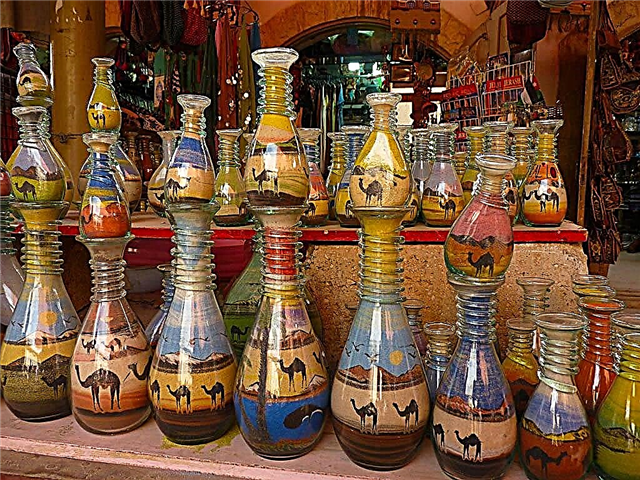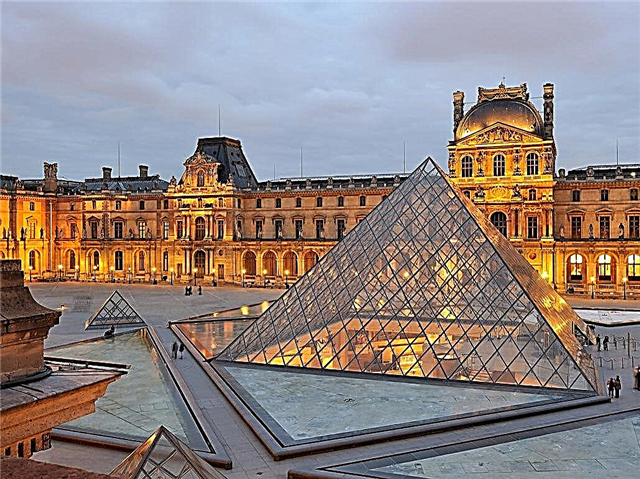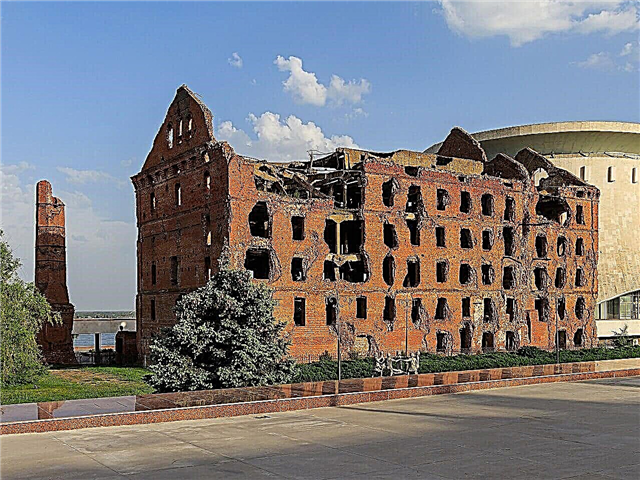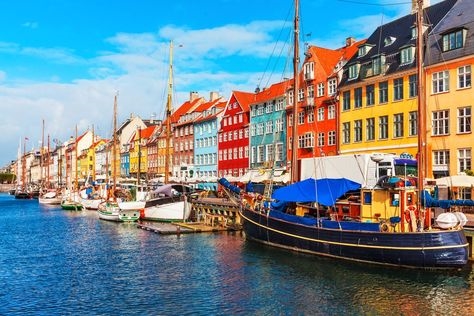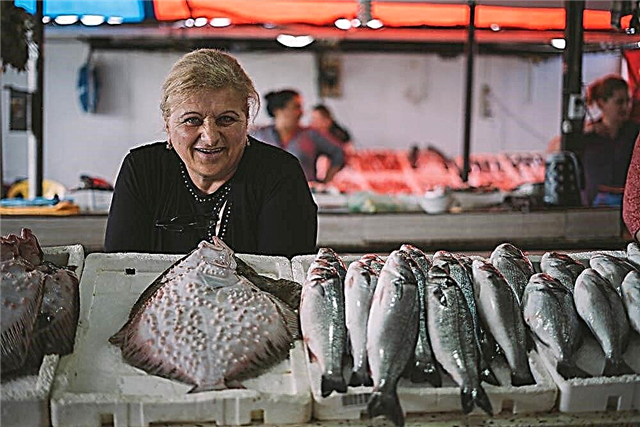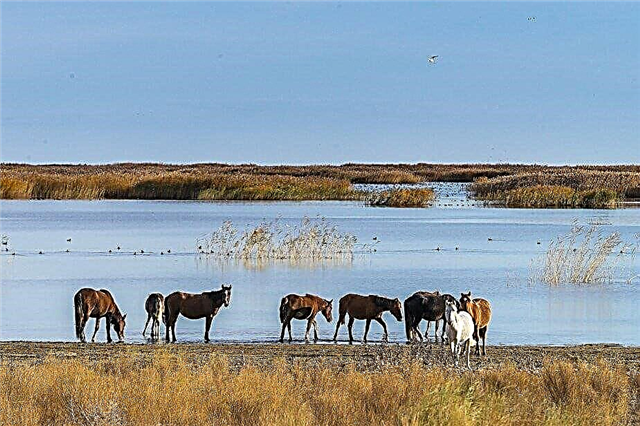The Leningrad region, following the example of its capital, is rich in sights. From man-made architectural beauties, to natural, from historical monuments, to cultural heritage sites - there is, without exaggeration, everything. The region has always been among the advanced, oriented towards Europe, to which it is close even geographically. He was always able to adopt the best, modifying the details for himself.
In addition, the focus on their own values was retained. Buildings of past centuries, Orthodox churches and monasteries coexist with new complexes, which have become favorite among tourists in a short time. It is not so easy to build a route for traveling around the region, one trip will not be enough to see all the most interesting.
The most interesting and beautiful places in the region
List, photos with names and descriptions of popular attractions!
Fortress Oreshek
It was founded in 1323 on Walnut Island and occupies its entire territory. During its existence, it managed to be in the property of the Swedes for almost a century, and later lost its original military-defensive significance and was used as a prison. During the Second World War, it suffered greatly. A monument erected here was dedicated to the soldiers who defended the fortress.

Tikhvin monastery
Founded in 1560. Located on the river of the same name in the city of the same name. At the beginning of the XVII was in the Swedish siege. In the 1920s, the premises of the monastery ceased to perform direct duties, a decade later it was completely closed. The most important relic is the icon of the Mother of God, considered miraculous. In 1995, the Russian Orthodox Church took control of the monastery, and a little later the icon was installed in its place.

Great Gatchina Palace
Built in the middle of the 18th century. The composition is a symbiosis of a medieval castle and a residence. The architectural style is classicism. It is also inherent in the interiors of the palace. It was rebuilt several times, the changes concerned the decoration of the facade, the repair of some premises and the park area. It was plundered and burned by the Nazis. After the war, there was an active recovery. Restoration work is still in progress.

Vyborg castle
It was first mentioned in 1293. It was founded by the Swedes. Wars and pinpoint military conflicts have always been waged around. The Russian troops did not manage to conquer the territory and the castle itself immediately. Since the beginning of the 70s of the last century it has become a museum. The main theme is the castle itself, since it is one of the few monuments of military architecture in Western Europe of that period in Russia.

Sablinsky natural monument
Founded in 1976. Located in the Tosno region. The natural ensemble is spread over an area of over one hundred and thirty hectares. A couple of waterfalls, canyons, caves, two rivers - natural beauty for every taste. In the past, quartz sand was mined here, but the fishery has long been abandoned. The place has a rich history of war and survival. On this topic, you can also find objects in the reserve.

Old Ladoga fortress
Built around 862. Although outwardly the fortress looks good, the restoration period dragged on. Restoration was required for towers and sections of the wall. The history of the fortress is inextricably linked with the confrontation with the Swedes. In a later period, excavations were carried out in the vicinity, which became the basis for many research works. In 1971, a local history museum was opened on the territory of the complex.

The Stroganovs' estate in Maryino
The construction was completed in the middle of the 19th century. Located in the Tosno region. The Stroganov family (later the Golitsyn family) owned these lands for a long time. After the revolution, the estate became successively: a museum of everyday life, telling about the Russian nobility, a rest house, premises of a research institute, an orphanage, a boarding house. Currently owned by a private person.

Mon Repos Park
It is located on the outskirts of Vyborg on the shore of the Zashchitnaya Bay. The flourishing of the territory is associated with the estate of the President of the St. Petersburg Academy of Sciences. He devoted a lot of time to her development, especially after retirement. His heirs continued to decorate the park with sculptures that fit into the landscape. A large-scale reconstruction is currently underway, but the territory is open to the public with some restrictions.

Fortress Koporye
Founded in 1237. Located on the banks of the Koporka. As a monument of medieval defensive architecture, it has never been restored. On the one hand, this made it possible to keep the architecture unchanged, on the other hand, the state of the fortress was average. Throughout its history, several times passed under the leadership of the Swedes. Received the status of a museum in the early 2000s. Open for visits with or without guides.

Alexander-Svirsky monastery
Founded in the 15th century. Located on the shores of Lake Roshchinsky. Several temples and churches were built on the territory of the monastery, perfectly preserved to this day. The age of their construction is different. After the revolution, the monastery was plundered, it began to be used as a correctional camp. In 1997, restoration began. In 2012, a choir was created, which quickly glorified the monastery.

Ivangorod fortress
Founded in 1492. Stands on the run of Narva. Although the fortress was specially built for defensive purposes, its size and geographic location did not allow for a rebuff in most cases: many positions were vulnerable, and the garrison was not numerous. Completion and restoration of the damaged facilities was carried out periodically. Retreating, the Nazis also caused significant damage to the structure.

Manor Rozhdestveno
The museum was founded in 1974, and the building itself was built in the 18th century. The exhibitions organized here concern the estate, the history of the surrounding area, as well as Vladimir Nabokov and his family. In the family of the latter, the territory passed by inheritance for many years. Later, a dormitory and a village school were located here. A fire in 1995 severely "worn out" the building, and it went through restoration.

Sukhodolskoye lake
Located in the Priozernoye area. Until the middle of the last century, it had the name Suvanto. The lake stretches for thirty kilometers, and is only two wide. One of the nearby attractions is the Stone Age sanctuaries. The fauna is diverse, while there are restrictions on fishing: some species are not allowed to be caught, others require a license.

Recommended: 30 popular lakes in the Leningrad region for recreation.
Church of the Intercession in the Nevsky Forest Park
The construction was completed in 2008. Located in the Vsevolzhsky region. The architecture of the Orthodox stone repeats the appearance of the church of the same name that existed three centuries ago. The shape of the building is a cross. The ground floor is reserved for Sunday school and a refectory. Of the valuable relics, one can single out the Gospel, printed in the era of Peter, and several significant icons from different periods of creation.

Town Hall Tower in Vyborg
Built in the 1470s. Belongs to the Vyborg Castle, the only surviving one. In the past, it was used for defense, it was constantly rebuilt and renovated, later it became a storage place for weapons, and then it stood in desolation awaiting the end of the restoration. Since 1997, it has been run by the church, and a museum on religious themes has been organized inside.

Park of family recreation and ecotourism "Zubrovnik"
Opened since 1979. The region is the only direction of ecological tourism. The visit program includes - acquaintance with bison, horseback riding, a walk in the forest, as well as a visit to a mini-farm. Animals can be fed and petted.Quadrocopters and snowmobiles are rented (depending on the season), there are places for parking and barbecue. Other entertainment - shooting gallery, paintball.

Osinovetsky lighthouse
Built on Lake Ladoga at the beginning of the last century. The height is over seventy meters. Its history is inextricably linked with the "Road of Life" during the siege of Leningrad. In memory of those events, a museum was opened nearby. The exhibits are distributed in five halls, there is also an open observation deck, where rarities are also exhibited, for example, artillery pieces. The Storozhensky lighthouse is a copy of Osinovetsky.

Church of St. Andrew the First-Called on Vuoksa
Unique because of its location - built on a small rock island. You can get to the church only by boat, because there is no barge or post. It has been standing on the Vuoksa River since 2000. It attracts not only pilgrims, but also lovers of everything unusual. From any point on a modest-sized building in a classic style, a beautiful view opens up. Listed in the Guinness Book of Records.

Reserve "Lindulovskaya Grove"
Founded in 1738. It is a state botanical reserve. Its area is just under a thousand hectares. Part of the territory is practically not visited by people to reduce the impact on the environment. One of the most protected plants is Siberian larch. It is her plantations that must be saved from the activities of people. In addition to larch, varieties of cedar, pine, alder and other species grow in the grove.

This is interesting: 25 most important wildlife sanctuaries in the Leningrad region.
Korela fortress
Built at the turn of the XIII-XIX centuries. It is located in the Priozersk area. The architecture is not quite typical for this type of fortification. The walls are very thick, but lower than usual. This indicates a change in the enemy's weapons and the adaptation of the builders. For some period it belonged to the Swedes, later it was repulsed. The Finns captured it in the early 40s, although they quickly lost it.

Hawk Lake
Located on the Karelian Isthmus. The area is just over one square kilometer. All surrounding areas belong to the national park. They have repeatedly wanted to develop quarries here, but so far the government has unequivocally denied a license for this. The nearby cliffs are attractive for climbers of all categories: there are more or less difficult climbs and trails.

Natural Park "Vepsian Forest"
Founded in 1999. It is located in the stasis of several districts sharing responsibility for the forest. The total area is almost one hundred and ninety thousand hectares. It was formed with the aim of keeping the forest intact. Along the way, there is the restoration of already damaged areas, research work in several directions and work on public education.

Fort "Krasnaya Gorka"
Construction was carried out at the very beginning of the last century. Coastal fort with the function of not allowing enemy ships to approach the city, blocking not only direct attacks, but also the landing of the enemy army on the shore. There is a fruitful work on the creation of the museum. She was given a start in 2007. Collected rarities, otherwise related to the history of the fort and the surrounding area. The collection is already extensive and varied.

Mayachny Island
It also has another name - Ivanovsky. The local lighthouse, like the surrounding area, was part of the fortifications during the war. It is now abandoned. From the top, it offers a panoramic view of the surroundings. It is known mainly due to the sad events of the beginning of the Second World War: during the evacuation of residents, there were enough accidents and deaths for a variety of reasons.

Konevsky monastery
Founded in 1393. It is located on the island of the same name on Lake Ladoga. Outwardly, it is very similar to the Valaam monastery located nearby. After the revolution, it was under the control of Finland. He returned to Russia after the war. In 1990, it began to be restored by the forces of the Russian Orthodox Church. Of particular value are the relics of the Monk Arseny Konevsky. The monastery has two farmsteads. The monastery is visited by pilgrims and architecture lovers.

Annenskie fortifications
Most of them were built in the middle of the 18th century. Located on the island of Tverdysh. The complex consists of four bastions, which are connected by straight ramparts. They stretch across the entire territory of the island. There is a stele in honor of the soldiers who died defending Vyborg, and a monument to Peter I. The monument of architecture and history is in a deplorable state, but so far no one is engaged in restoration.

Museum-Estate "Priyutino"
Built at the turn of the 18th-19th centuries. The Literary and Art Museum appeared here much later. During the war, the territory suffered from air strikes. In subsequent years, the building faded, the park became more and more wild and lost its former splendor. The restoration began with him: they broke the alleys, made paths, put trees in order. In 1990 the museum started working again.

Radon lakes in Lopukhinka
The year of foundation of the natural monument is considered to be 1976. Its area is about two hundred and seventy hectares. Water from lakes and especially from springs located here has medicinal properties. Since it is saturated with radon. The area is covered with vegetation, the fauna is represented by a great variety of birds. The terrain turned out to be simultaneously healing body and soul.

Verkhniye Mandrogi
The village became a tourist center in 1996 and combined several popular routes for travelers at once. Located on the left bank of the Svir. In fact, it is a complex of museums about Russian life, traditions and history. Master classes will teach guests various folk crafts. You can tailor your visit to the calendar of local holidays, many of which are annual.

Ski resort "Okhta Park"
A modern holiday destination for lovers of skiing, snowboarding and other winter activities. It is located in a pine forest at the source of the Okhta. The local skating rink stretches for one and a half kilometers. The tracks are suitable for both beginners and professionals and are divided by difficulty and length. Some are over fifty meters high. Inventory can be rented.


